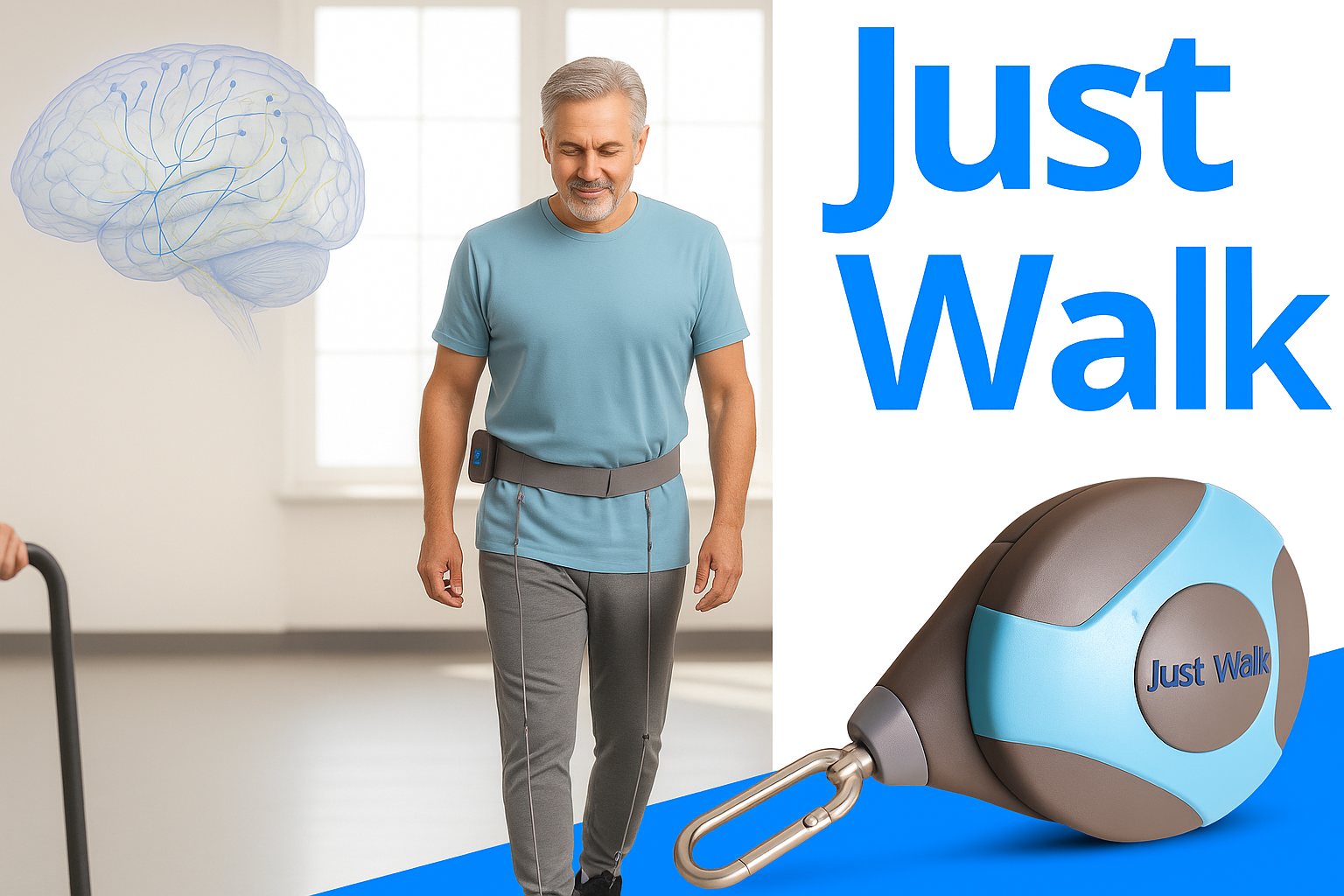Neuroplasticity: A Key to Recovery with Just Walk
The Power of Neuroplasticity in Rehabilitation
Neuroplasticity, the brain’s ability to adapt and form new neural connections, is a game-changer for individuals recovering from neurological conditions like stroke, Parkinson’s, or traumatic brain injuries. For patients and caregivers seeking effective rehabilitation solutions, understanding neuroplasticity opens the door to faster, more functional recovery. With innovative tools like
Just Walk™ from Chaban Medical, patients can harness neuroplasticity to regain mobility and independence, transforming daily activities into powerful rehabilitation exercises.

What is Neuroplasticity?
Neuroplasticity refers to the brain’s capacity to reorganize its structure, functions, and connections in response to experience, injury, or learning. This process allows the brain to adapt by forming new neural pathways or strengthening existing ones, making it critical for recovery from neurological impairments or orthopedic surgeries. For example, neuroplasticity enables
stroke survivors to relearn walking or individuals with
multiple sclerosis to improve coordination. By engaging in targeted, repetitive exercises, patients can stimulate neuroplasticity to rebuild motor skills and enhance quality of life.
Why Neuroplasticity Matters and Who It Affects
Neuroplasticity is vital for anyone facing mobility or balance challenges due to neurological conditions such as stroke, Parkinson’s disease, multiple sclerosis, cerebral palsy, or traumatic brain injuries. It also benefits those recovering from orthopedic procedures like knee or hip replacements, where relearning movement patterns is essential. Caregivers and medical professionals play a key role in supporting patients through this process, ensuring exercises are consistent and effective. By leveraging neuroplasticity, patients can achieve greater independence, reducing reliance on long-term care and improving overall well-being.
Neuroplasticity in Its Natural State: Naturally, neuroplasticity is at work throughout life, enabling us to learn new skills, adapt to environments, and form memories—like mastering a new language or navigating a new city. In childhood, neuroplasticity is at its peak, allowing rapid learning and adaptation. However, this capacity gradually declines with age due to reduced synaptic flexibility and slower neural regeneration, which can make recovery from injuries or neurological conditions more challenging in older adults. Despite this decline, targeted interventions like those provided by Just Walk can stimulate and enhance neuroplasticity, counteracting age-related limitations and supporting recovery at any stage of life.
Neuroplasticity Exercises for Rehabilitation
Effective rehabilitation hinges on neuroplasticity exercises that challenge the brain and body to adapt. These exercises focus on repetitive, functional movements to rewire neural pathways. Examples include:
- Gait Training: Practicing walking to improve coordination and balance.
- Stair Climbing: Enhancing motor control and leg strength.
- Lateral Movement: Building stability for side-to-side motions.
- Upper Body Strengthening: Using targeted movements like arm curls to restore function.
Devices like
Just Walk make these exercises accessible by integrating them into daily life. Its lightweight, 3-pound design supports the full gait cycle with adjustable resistive forces, promoting neuroplasticity in just 15-20 minute sessions twice daily.
Tips and Tools for Patients and Caregivers
To maximize neuroplasticity during rehabilitation, patients and caregivers can follow these practical tips:
- Consistency is Key: Short, daily sessions (15-20 minutes) are more effective than sporadic, lengthy ones for consolidating neuromotor patterns.
- Incorporate Daily Activities: Turn routine tasks like walking or climbing stairs into neuroplasticity exercises.
- Use Supportive Devices: Tools like Just Walk provide low-impact resistance to enhance muscle and joint function without overloading the body.
- Track Progress: Keep a journal of mobility improvements to stay motivated and share with healthcare providers.
- Collaborate with Professionals: Work with physiotherapists to tailor exercises to specific conditions, ensuring safe and effective recovery.
Just Walk: A Revolutionary Tool for Neuroplasticity
Just Walk, developed by Chaban Medical, is a pioneering neuromotor rehabilitation device designed to harness neuroplasticity for faster recovery. Unlike traditional rehab equipment, Just Walk is a fully mechanical, magnet-driven wearable weighing only 3 pounds, making it ultra-portable and easy to use at home or on the go. Its unique features include:
- Seamless Gait Integration: Assists with foot lift and provides four levels of adjustable resistance to strengthen muscles and joints during walking.
- Upper and Lower Body Support: Detachable hand grips enable exercises like chest presses or bicep curls, targeting comprehensive neuromotor recovery.
- Time-Efficient Design: Clinical research supports that 15-20 minute sessions twice daily are sufficient to consolidate neuromotor memories, ideal for busy patients.
- Versatile Applications: Suitable for neurological conditions (e.g., stroke, Parkinson’s) and orthopedic recovery (e.g., hip replacements), supporting inpatient-to-home transitions.
Unlike bulky or complex rehab devices, Just Walk transforms daily movements into low-impact, functional workouts, empowering patients to reclaim independence.
Unlock Recovery with Neuroplasticity and Just Walk
Neuroplasticity offers hope for those facing mobility challenges, enabling the brain to adapt and recover through targeted exercises. With
Just Walk, Chaban Medical provides an innovative, portable solution to make
neuroplasticity exercises accessible and effective. By integrating this device into daily life, patients can accelerate recovery, improve balance, and achieve lifelong independence.
Related Topics
FAQs
?What are some examples of neuroplasticity in action
Neuroplasticity is evident when stroke survivors relearn to walk, Parkinson’s patients improve coordination, or post-surgical patients regain joint function through repetitive exercises.
?How does Just Walk support neuroplasticity
Just Walk uses adjustable resistive forces and functional movements to stimulate neural pathway formation, with 15-20 minute daily sessions proven to consolidate neuromotor patterns.
?Who can benefit from neuroplasticity exercises
Patients with neurological conditions (e.g., stroke, multiple sclerosis) or orthopedic issues (e.g., knee replacements) can benefit, along with caregivers supporting their recovery.
?How long should neuroplasticity exercises be performed
Short, consistent sessions of 15-20 minutes twice daily, as supported by Just Walk, are sufficient to drive neuroplasticity and functional improvements.
Source
- National Institute of Neurological Disorders and Stroke. (2023). Neuroplasticity and Brain Repair.
- Mayo Clinic. (2024). Rehabilitation for Neurological Conditions
Important
This article is for informational purposes only and is not a substitute for professional medical advice; always consult your doctor or physical therapist before starting any exercise or using any device.



